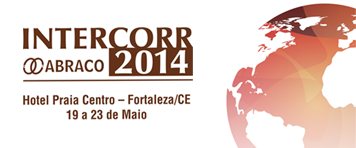
Programação > Conferência de Abertura
Título: Functional Surfaces for Corrosion Protection – current challenges and future trends
Tomasz Liskiewicz - Charter Coating Service (2000) Ltd
MINI-CURRÍCULO:

Tomasz received his MSc degree in Materials Science and Engineering from Lodz Technology University in Poland in 2000, and his PhD degree in Tribology and Surface Engineering from Ecole Central de Lyon in France in 2004. Tomasz has an expertise in Tribology and Surface Engineering including functional coatings for low friction, anti-wear and corrosion resistant applications.Tomasz is currently working as a Senior Scientist at Charter Coating in Calgary, Alberta, where he is providing an expert advice on protective coatings failure analysis, coatings testing and characterization, surface preparation and functional coatings selection. Prior to joining Charter Coating, Tomasz was an academic researcher and spent eight years in Leeds, UK, working as a Lecturer in School of Mechanical Engineering at the University of Leeds.In Leeds, Tomaszwas managing Advanced Coatings Design Lab with state-of-the-art Physical Vapor Deposition coatings platform.
Tomasz acts a member of Editorial Board, Editorial Assistant and referee for number of international journals in the field of Materials Science. He is a member of Tribology Group Committee at the Institute of Physics in London. Tomasz has a keen interest in the fields of biomimicry and TRIZ problem solving method. He is actively using a range of surface analysis techniques.
RESUMO:
This perspective paper elaborates on the role of coatings and surface engineering in the corrosion protection of materials. The paper is structured in three major parts addressing the following aspects of functional surfaces for corrosion prevention: (i) historical background, (ii) state-of-the-art, and (iii) future trends.
The first part of the paper presents a historical context to the subject by looking at early surface engineering solutions against corrosion. The nature of the problems and the environment where these early coatings emerged is illustrated.
The second part of the paper takes a snapshot of the state-of-the-art in the field of anti-corrosion surface technologies. It provides a survey of current challenges in the field, presents breakdown of major coating methods and gives a summary of brief market analysis.
Finally, industrial trends analysis techniqueis used in the third part of the paper in order to predict possible ways of future evolution of functional surfaces for corrosion protection. The paper concludes with an outlook on where the next market innovation might be coming from.
« voltar

